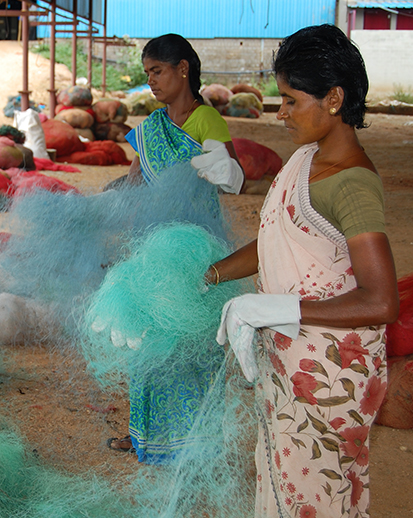Water stewardship
Fresh water is a finite natural resource that needs to be used and managed in a responsible and sustainable way. Water risks are increasing due to climate change and increased urbanization, impacting food production, nature and biodiversity. Our goal is to ensure the sustainable use of water in balance with the local context and to have safe, available water for all.
|
|
Aspiration |
|
2021 |
|
2020 |
||||||||||
|---|---|---|---|---|---|---|---|---|---|---|---|---|---|---|---|---|
|
|
|
|
|
|
|
||||||||||
Water Use (million m3)1 |
|
|
|
|
|
|
||||||||||
Water withdrawal in water-stressed areas2 |
|
|
|
10.93 |
|
10.5 |
||||||||||
Water withdrawal for non-OTC |
|
|
|
26 |
|
24 |
||||||||||
Consumptive Use |
|
|
|
5.3 |
|
4.4 |
||||||||||
|
|
|
|
|
|
|
||||||||||
Sustainable water management |
|
|
|
|
|
|
||||||||||
Water withdrawal efficiency improvement |
|
at least maintain |
|
8.0%3 |
|
-4 |
||||||||||
Water withdrawal efficiency improvement — water-stress sites versus 2020 |
|
10% by 2030 |
|
7.8%3 |
|
-4 |
||||||||||
|
|
|
|
|
|
|
||||||||||
Emissions to water |
|
|
|
|
|
|
||||||||||
COD (kt) |
|
|
|
2.0 |
|
2.0 |
||||||||||
|
||||||||||||||||
Commitments, policy and governance
DSM is a signatory of the CEO Water Mandate, a UN Global Compact initiative to advance water stewardship and drive progress on SDG 6 (Clean Water and Sanitation). We commit to measuring, monitoring and reporting relevant performance indicators for water. We disclose our progress via the CDP Water Security questionnaire. In 2021, our CDP Water Security rating improved to an A, in recognition of our ongoing efforts in sustainable water management.
Water security is an integral part of our risk mitigation and environmental impact reduction strategies. Our water policy is part of the SHE policy and specifies the goal, governance and management standards on water management.
Impacts and dependencies
Water is not a primary ingredient in our products. Our primary water use is in utility systems, as a process medium and for cleaning purposes. Water is also used in our upstream supply chain, for agriculture-related as well as industrial raw materials.
A large proportion of our total water withdrawal (approximately 75%) is used for once-through cooling (OTC) purposes in low water-stress areas. The risk exposure and environmental impact of OTC are limited. The other 25% of our water withdrawal is for non-OTC purposes — this is the focus of our key performance indicators and targets on water. According to our water risk screening in 2021, 35% of our non-OTC withdrawal is from a current water-stressed area, or a water-stressed area in 2030.
"On World Water Day 2021, we published our updated water target and explained why water has always been an important topic for DSM. We are a signatory to the UN Global Compact CEO Water Mandate and this Report represents our progress on water stewardship."
Water withdrawal
in million tons
Risk management
All sites with water withdrawal materiality and sites in water-stressed areas are required to conduct a site-level water risk assessment (WRA). The frequency of the assessment is specified in DSM’s water management standard. In 2021, we reached a WRA coverage of 97%, evaluating four sites newly identified to be in a water-stressed area based on the 2020 water risk screening. For one other site, the WRA was postponed to 2022, as part of the site’s overall SHE improvement plan.
Water quality remains the most important water-related risk, often related to meeting business growth or increasingly stringent regulatory requirements. For identified high risks, the site defines short-term measures to address the immediate issue(s) and/or long-term measures including technical projects to reduce pollutant level at source or upgrades of the wastewater treatment facility. For example, we are executing a capacity expansion project for the wastewater treatment plant (WWTP) in Village-Neuf (France), including upgrades to add additional treatment steps.
In our value chain, we monitor the materiality of water for our suppliers and customers through value chain engagement programs, such as Together for Sustainability (TfS).
Water-related targets
We strive to continuously improve water withdrawal efficiency for our production facilities. In early 2021, we announced a context-based water reduction target to improve water withdrawal efficiency in water-stressed areas by 10% by 2030 versus 2020. We started a water reduction program covering 22 sites in an existing or future water-stressed area. Several large sites in water-stressed areas have improved their site-level water balance in 2021, through better leakage detection and prevention.
Some sites have also executed water reduction projects, often in close collaboration with energy reduction projects. For example, in our Xinghuo site (Shanghai province, China), low efficiency (steam-driven) chillers were replaced by new installations, saving 33,000 m3 of water per year. At our site in Jingjiang (Jiangsu province, China), we installed a new circulating water system for vacuum pumps, saving 100,000 m3 water per year. Our site in Belvidere (New Jersey, USA) installed a new cooling tower together with the replacement of more than 25-year-old chillers. The improved system contributes to a water use reduction of approximately 4,000 m3 per year. These projects resulted in a 7.8% water withdrawal efficiency improvement in water stressed areas in 2021 (versus 2020).
For effluent management, our sites set site-specific pollution reduction targets, based on business context and current and future regulatory requirements.





